How Take Potrait Effect Pic With Dslr Camera
How to Take Groovy Photos with a DSLR or Mirrorless Camera
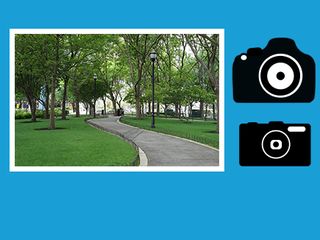
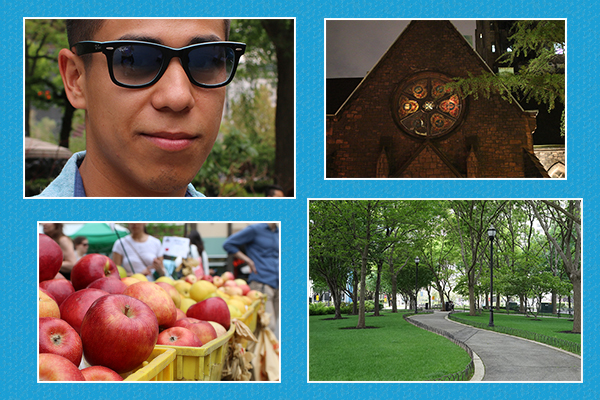
Your offset DSLR or mirrorless photographic camera can excite y'all with its promise of professional person-looking photos. Merely the knobs, dials and buttons on the camera may be intimidating for first-timers, and even pros might not know what some of the controls exercise. Fearfulness not: Utilize this guide as a cheat sail to get the about out of your camera in common shooting situations.
For help with whatever of the terms we use in this article, please see our Digital Photographic camera Glossary.
What modes should I use?
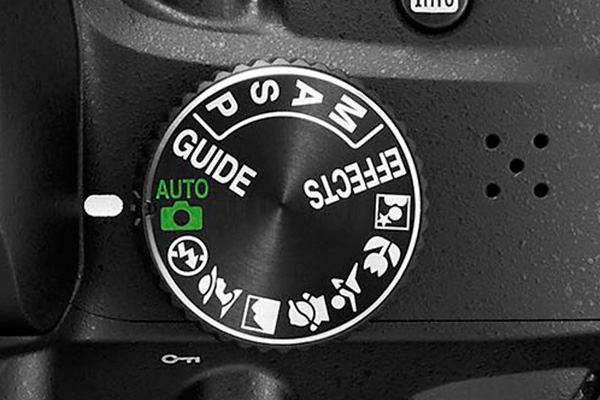
Y'all'll find a way dial on summit of most cameras. Almost all DSLR and mirrorless cameras offering a full manual way that lets you command shutter speed and aperture. It'due south the photographic equivalent of driving a stick-shift motorcar: If you lot mess up, the camera won't help you. If you lot're non confident about handling all of these settings or are shooting in situations with rapidly changing lighting atmospheric condition, y'all're amend off choosing shutter or Aperture Priority mode, which we'll explain in a chip.
Novice shooters can try Program style, in which the camera decides what balance of shutter speed and discontinuity is best to get a good exposure. However, Program fashion allows you to adjust a few other settings, such as ISO light sensitivity.
Many DSLRs and mirrorless cameras offer additional specialty modes. On Canon cameras, for example, you tin cull Creative Machine (CA) manner, which gives you lot some control over the level of background blur (depth of field) and color richness.
A quick note on lenses and camera formats
The size of a camera'southward epitome sensor affects the focal length (zoom level) of a lens. Virtually DSLR and mirrorless cameras use what'southward called an APS-C paradigm sensor. Withal, Olympus and Panasonic cameras utilize a sensor size called micro 4/three, and professional cameras use a total-frame sensor. Throughout this guide, we volition recommend lenses for APS-C cameras and offer the equivalents for the other two in parentheses.
How to capture activeness photos
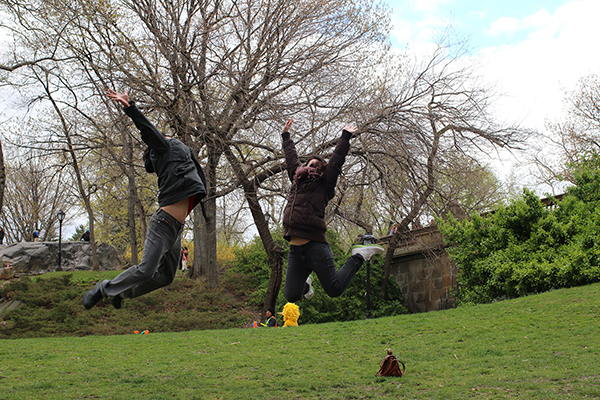
The correct shutter speed is crucial to how you want an action shot to look, whether you freeze the movement completely or provide varying degrees of blur. To freeze action, follow these steps.
1) Put the camera in Shutter Priority manner. On some Canon cameras, this is labeled Tv (time variable), while on Sony and Nikon models, it'due south labeled S.
ii) Set the shutter speed to 1/250 2nd to capture most motility, such as people walking around.
3) If your subject is extra fast, you'll desire to utilise much faster shutter speeds. For example, 1/1250 second did the trick for freezing a baseball game in mid-flight also as people jumping in the air.
How exercise I accept portrait shots?
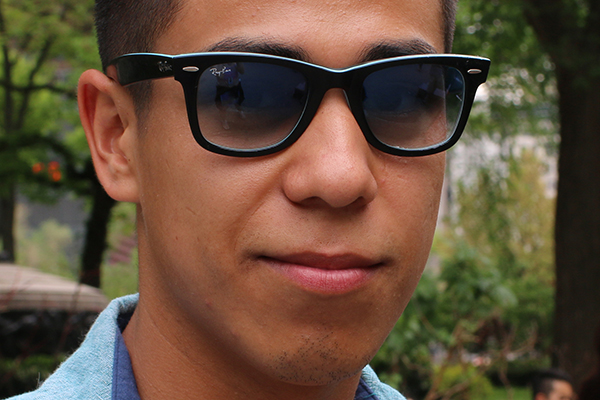
In general, yous volition become the best results with a shallow depth of field (controlled past the aperture). This keeps your subject precipitous but blurs out the background so it doesn't distract. Follow these steps:
ane) If you're using a zoom lens on a mainstream photographic camera, set up information technology to about 35mm, or use a 30mm or 35mm prime number (nonzooming) lens to go a good nondistorted bending of view on the subject (about 50mm on a full-frame camera or 25mm on a 4/3 camera).
2) Prepare the camera on Aperture Priority ("A" on Sony or Nikon, or "Av" on Catechism) using the mode dial.
three) Use an aperture of f/eight if at that place is enough distance between the subject and the background — say almost 20 anxiety. If the distance is less, try a larger discontinuity, such as f/5.6 or larger, to maintain a shallow depth of field.
How do I accept landscape photos?
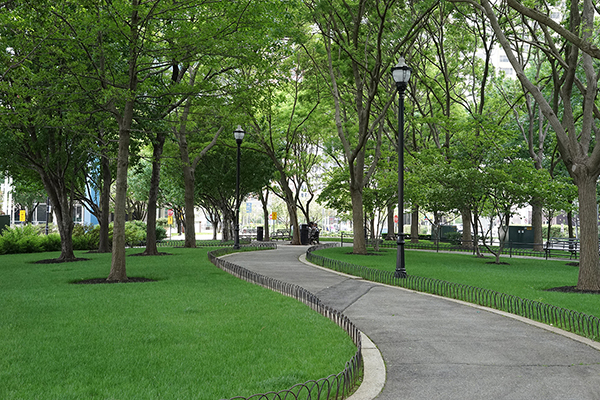
Continue your camera on Aperture Priority, but upward your aperture to f9 or higher to keep things in the altitude in focus. If y'all want to keep everything in the movie precipitous (from foreground to background), fix your discontinuity at 22 or college. Using a wide-angle lens, such every bit those with focal lengths between 11 and 22mm (almost 17 to 28mm on a full-frame photographic camera or 7 to 14mm on a micro 4/iii).
How do I have photos in low calorie-free?
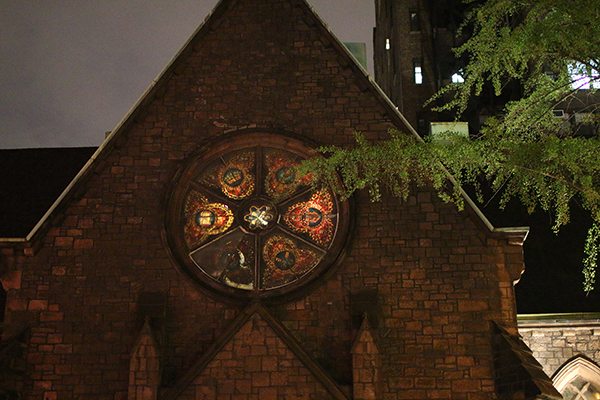
When there isn't enough low-cal in your surround for a good shot, y'all may desire to use a larger discontinuity or slower shutter speed to let more low-cal into the camera.
Slower shutter speeds could magnify blur caused by movements, such as shaky hands, on the part of the photographer.
If y'all don't take a tripod or you need to shoot action, turn your camera to Shutter Priority and set your shutter speed to ane/60 of a second. If y'all have an image-stabilized lens, make sure that function is on, and you can set the shutter speed even slower if needed — for example, to 1/30 of a 2d.
Whenever possible, apply a tripod, or something stable, such every bit a table or window ledge, on which to rest your camera. If you've washed that and take an image-stabilized (IS) lens, turn off paradigm stabilization. While IS helps during handheld shots, it actually introduces a flake of shake if the photographic camera is sitting perfectly still.
This scenario with a irksome shutter speed works well for shooting scenes with little or no motility, such as a building at night. You'll as well desire to utilize Timer way or a remote control (connected via cablevision or wireless smartphone app) to trigger the shot, eliminating the shake that happens when your finger presses the Shutter button.
Avant-garde shooters with a DSLR using a remote control can set "Mirror lockup" in cameras with that office. This locks the mirror in the raised position and then that it doesn't have to flip upwardly and crusade vibration. Pressing a button on the remote simply opens the shutter to expose the sensor.
How practice I use high dynamic range (HDR)?
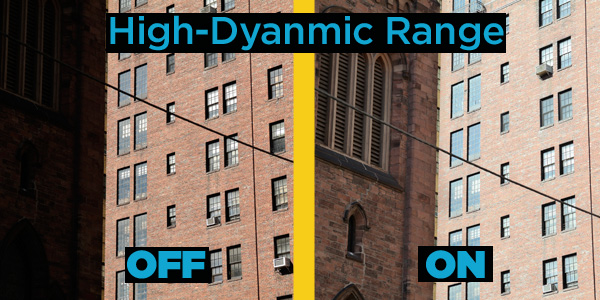
HDR instructs the camera to capture the aforementioned scene at several different exposure levels (normally iii) and combine the images and then that all components — from brightest to darkest — are properly exposed.
This is most useful for pictures with varying calorie-free settings in one scene, such as a mural photograph of a woods with dark copse in the foreground merely brilliant sunshine in the background.
On some cameras, you tin determine what exposure compensation stops to shoot at, and you lot adjust that by going into the photographic camera's settings.
What ISO light-sensitivity settings should I employ?
Get more detail in dark rooms or at nighttime by adjusting your ISO light sensitivity. Setting your ISO to Machine volition serve yous well on virtually cameras, and frees you up to concentrate on other relevant settings (such as shutter speed or aperture).
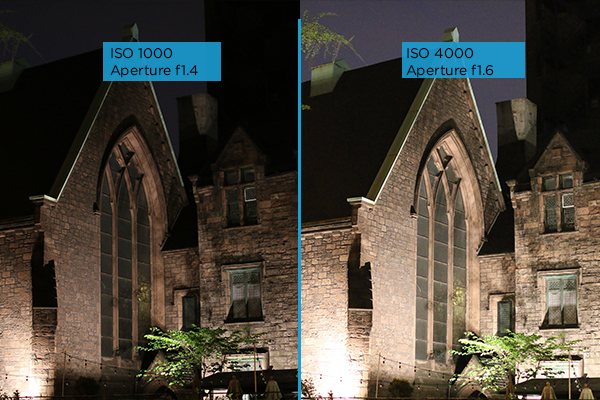
To reduce grain in your pictures, though, prepare your photographic camera to cap ISO at the highest level that still produces acceptable photos. ISO 3200 is a pretty safe bet, just some cameras can go higher before images become too grainy.
As a dominion of pollex, use the lowest ISO possible that still achieves proper exposure besides as depth of field (aperture setting) and shutter speed (motion freeze or blur) that yous're shooting for. If yous accept to go higher though, it's meliorate to do that and get the shot rather than miss it.
Whether y'all decide to accommodate ISO manually or go out information technology upward to the camera, brand sure to turn on Noise Reduction to keep out fuzziness in your pictures. Some cameras offering varying degrees of noise reduction. Experiment to discover the one that removes enough graininess without removing also much particular from the images.
More:How Many Megapixels Do You Really Need?
How practice I get a well-exposed photo?
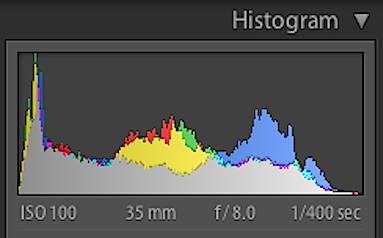
A camera's light meter determines how much light is needed for a properly exposed photo and tells you lot via the display if your current setting is correct.
An often-neglected tool on cameras is a histogram, a graphic showing the distribution of light and night elements in the frame. Ideally, a histogram volition look similar a bell curve, with nigh of the image in the midtone levels of brightness.
Most cameras offering three metering modes: Spot, Center Weighted and Evaluative (aka Matrix or Pattern). Evaluative will typically be your best bet, since it looks at the whole paradigm and determines the best exposure for the overall picture.

If yous're still getting overexposed or underexposed images, you tin endeavour changing over to Heart Weighted or Spot Metering modes, or adjusting the exposure compensation (run across below).
Spot Metering makes the camera mensurate just a modest spot in the center and ignores the rest of the frame, while Centre Weighted considers the whole picture simply emphasizes the eye. This setting is useful for situations in which a specific area in the image is lit upwardly but the surrounding region is dark, such every bit a singer on phase or a person blowing out birthday candles.
How do I brand photos lighter or darker using exposure compensation?
In i of the priority or machine modes, most cameras shoot for what their makers take set as an ideal level of exposure. However, you tweak shutter speed, aperture or ISO; the camera will recoup with the other settings to lucifer the same level of exposure.
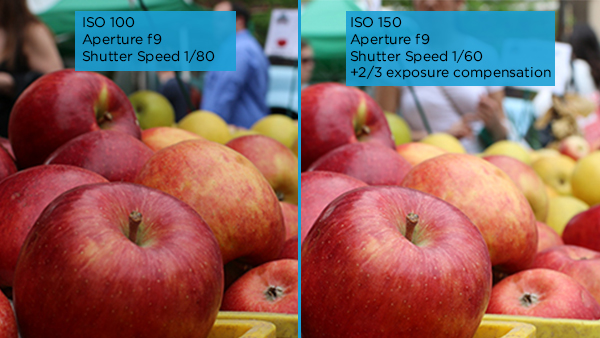
You lot can fix overall brightness by turning upward or downwardly a setting called exposure compensation. The tool to do this is typically marked by an "EV" sign on a scale, with "1, 2, iii" and "-1, -ii, -3" on either side of a "0." Each marking between these digits is a third of a stop, and y'all first at "0" for every picture and move toward the positive numbers for brighter images and negative for darker images.
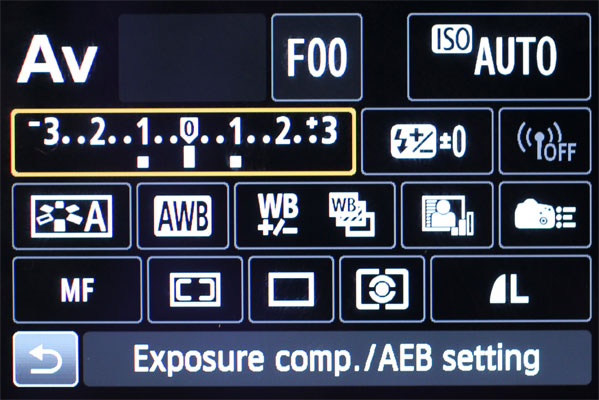
Unremarkably, you lot'll but need to adjust exposure compensation by between one-third of a cease and a total terminate. E'er refer to your camera's built-in histogram to become a good idea of how your paradigm is exposed.
How practice I accommodate white remainder?
If your pictures' color looks somewhat off — for instance, if it's yellowish or blueish — you might need to arrange the camera's white balance to counteract ambient lighting with a heavy color cast. Virtually cameras have adequate automatic white remainder for full general shooting situations but require tweaking in low-light situations, such every bit under incandescent lights.
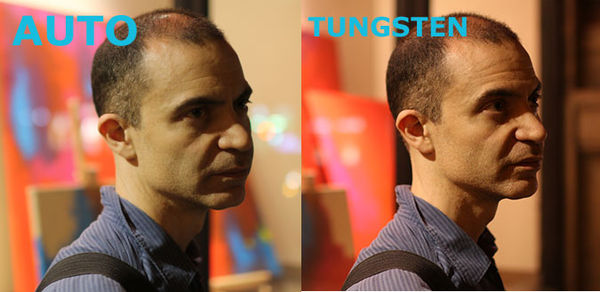
A quick fix for this is to switch to one of the preset white-remainder settings. Y'all'll typically detect Daylight, Tungsten or Shade as some of the available options, and using Tungsten under incandescent light usually fixes pictures that are likewise yellow.
If the color still looks off, you may need to prepare the white rest manually. You'll demand to provide the camera with a white-colored object for reference, like a blank sheet of white paper.
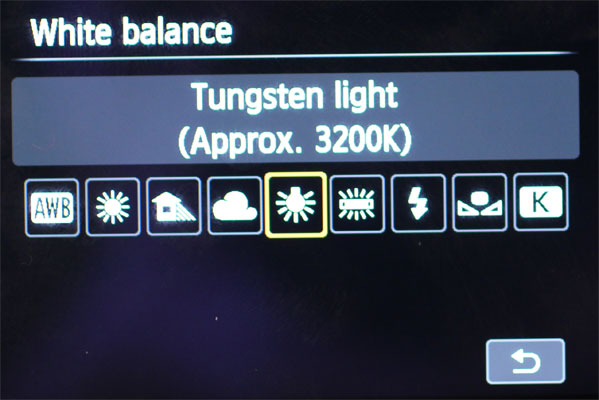
Depending on your camera model, this could be as easy equally toggling White Balance mode to Custom and shooting a reference picture of the paper to show the camera what "white" should look like. Notwithstanding, on some cameras, such as the Canon EOS 70D, manual White Residuum is a complicated procedure that requires going into your device's settings, choosing Custom White Residuum and shooting a reference object.
- Best DSLRs 2014
- Why Autofocus is the New Megapixel
- Camera Buying Guide 2014
Follow Cherlynn Depression @cherlynnlow and on Google+ . Follow Tom's Guide at @tomsguide , on Facebook and on Google+ .
Source: https://www.tomsguide.com/us/how-to-take-great-pictures,news-19185.html
Posted by: comesbeamer.blogspot.com

0 Response to "How Take Potrait Effect Pic With Dslr Camera"
Post a Comment